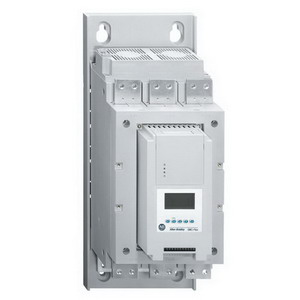
Is Soft Starter or Variable Frequency Drive Right for You?
As industrial automation specialists, choosing between a variable frequency drive (VFD) and a soft starter can significantly impact your system's performance, energy efficiency, and cost savings. With advancements in motor control technology, understanding the key differences between these devices will help you make the right selection for your application. This blog will explore both options, outline their benefits and drawbacks, and help guide your decision-making process.
Overview: Soft Starter vs. Variable Frequency Drive
Soft Starters are used to gradually ramp up voltage during motor startup, reducing mechanical stress and electrical inrush current. They're ideal for fixed-speed applications where smooth startup and torque control are essential.
Variable Frequency Drives (VFDs) go further by adjusting the frequency and voltage supplied to a motor, providing full speed control. They’re ideal for variable load applications that demand energy savings, precise control, and enhanced process optimization.
Benefits of Using a VFD
-
Energy Savings: Reduce energy use by up to 50% by adjusting motor speed to demand.
-
Precise Speed and Torque Control: Ideal for HVAC, conveyors, and pumps.
-
Real-Time Monitoring: Supports automation with feedback loops and diagnostics.
-
Extended Equipment Life: Controlled acceleration/deceleration reduces wear.
-
Improved Safety: Gradual start/stop minimizes shock loading and faults.
Benefits of Using a Soft Starter
-
Reduced Mechanical Stress: Gradual voltage ramp limits stress on gearboxes, couplings, and belts.
-
Lower Inrush Current: Helps prevent voltage sags and electrical disturbances.
-
Compact & Cost-Effective: Simpler than VFDs, making them budget-friendly.
-
Quick Installation: Easy to configure for standard start/stop applications.
Examples:
-
Siemens Sirius 3RW55 (advanced safety features and communication options)
-
ABB PU Series (smooth control, overload protection, modular design)
Implementation Guide
-
Assess Motor Requirements: Power, torque, and speed demands.
-
Select the Appropriate Device:
-
Use a VFD for variable-speed control.
-
Use a soft starter for reduced torque startups.
-
-
Install: Follow manufacturer guidelines.
-
Configure: Set parameters to match load demands.
-
Test: Commission system and verify safe, efficient operation.
Pros & Cons
Soft Starter Pros:
-
Simple installation
-
Cost-effective
-
Reduces wear and inrush current
Soft Starter Cons:
-
No speed control after startup
-
Limited diagnostics
-
Lower energy savings potential
VFD Pros:
-
Full speed control
-
High energy efficiency
-
Real-time data for diagnostics
VFD Cons:
-
Higher initial cost
-
Complex installation and setup
-
Generates harmonic noise
Recommended Brands and Models
-
Allen-Bradley: SMC Flex Soft Starter, PowerFlex 755 VFD
-
Schneider Electric: Altivar VFD Series
-
ABB: PSTX Soft Starter, ACS355 VFD
-
Danfoss: FC Series VFD
-
Eaton: S611 Soft Starter
Final Thoughts
Choosing between a soft starter and a VFD depends on your motor’s function, process control needs, and long-term operational goals. Soft starters offer economical simplicity for fixed-speed loads, while VFDs deliver powerful control for dynamic applications. By understanding your application’s needs and leveraging the right technology, you’ll gain better efficiency, safety, and ROI in your automation systems.
Contact PLG Automation today:
Email: sales@plgautomation.com
Phone: 800-906-9271
